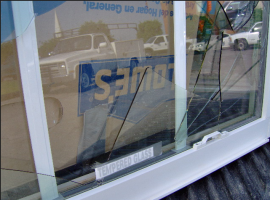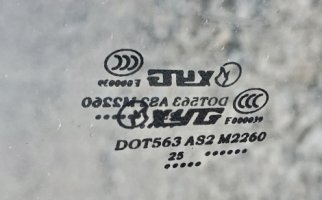Inspector Gadget
SAWHORSE
Our office has seen a rather alarming influx of people using DOT-rated safety glass in such things as residential guards on decks. Below is an image found in the exit door of a Part 3 building under construction. In all cases, the installer/distributor has stated "you're the first one to complain about such things," which might be smoke in the colon ....
BUT it's worth raising for discussion.

I also, earlier this year, had an issue with a glass-filled residential door from (IIRC) Belgium that had Euro markings. In that case, the manufacturer was able to state that the glass also met ANSI Z97.
EDIT: Part 3 reference is 3.3.1.19(7) which refers to 9.6.1.4
BUT it's worth raising for discussion.

I also, earlier this year, had an issue with a glass-filled residential door from (IIRC) Belgium that had Euro markings. In that case, the manufacturer was able to state that the glass also met ANSI Z97.
EDIT: Part 3 reference is 3.3.1.19(7) which refers to 9.6.1.4


